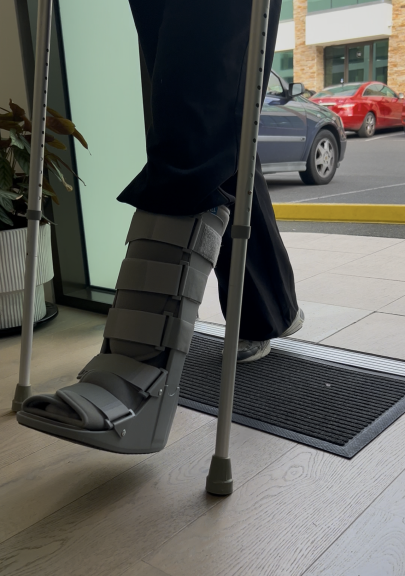This article has been co-authored by Dr Jayce Gilbert.
Experienced a pull or pop behind your thigh when running or kicking?
There it goes, a sharp catching and popping sensation behind the thigh. Maybe you tried to kick the footy a bit further than usual, maybe you pushed that little bit too hard on the usual 5km run.
Are you feeling sore? Struggling to walk? unable to run? Struggling to do everyday activities without a sharp catching pain behind your thigh? It is possible you have done a hamstring.
Hamstring Injuries Are Increasing!
Hamstring injuries are a major concern, as they require a long and tedious management plan. For professional soccer players, hamstring injuries were shown to increase by 4% each year from 2001-2014(1) . According to the AFL’s 2021 injury report, the most common injury were hamstring strains, having increased from the year prior (2). They mostly occur during the match rather than training. Usually biceps femoris, a Y-shaped muscle attaching across the hip and knee and three bones, is the main culprit. Hamstring injuries are being seen more often nowadays in professional athletes from those two major sports. But you don’t have to play for Manchester United or the Melbourne Demons to injure your hamstring. You might be a local footy player, a basketballer, a dancer or even just someone who likes to go for a run. All of which are susceptible to hamstring tears. It’s important we give you the best advice on how to stay one step ahead with your hamstring management.
Get the right diagnosis
A 'hammy' is not just any 'hammy'. Sure, you know there are three different hamstring muscles and that is a good start, but what kind of injury is your hamstring injury. We see many old injures that have never been properly rehab, persist, and just brew away for the next ‘gotcha!’ moment on the pitch or court.
Muscle injuries are now classified by the location in the muscle and the nature of the injury. We can classify them as in this chart with explanations below. This enables use to target treatment to diagnostic classification.
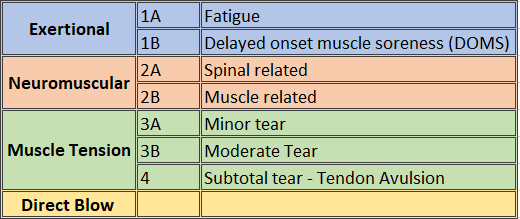
Functional / Exertional Muscle disorders (1A/B)
These are painful muscle injuries without evidence of a tear. Think of dull pains, overuse pain, delayed onset muscle soreness. Aggravated by touch and pressure.
Neuromuscular Muscle Injuries (2A/B)
These have bands of tension, eased by stretching, they fell like a pull or a cramp. There may be some spine referral and locating this means the right treatment for this group.
Structural injuries (Muscle Tension (3-4)/ Direct Blow)
These consist of some or more fibres that become ruptured. The location in belly, muscle tendon or bone junction will also mean what kind of treatment and rehab you will need.
Often, we will see injuries that are a combination of these sub-injuries and for ongoing re-injury in the hamstring, we often see neuromuscular injury types.
So, the muscle injury type and location of your injury means a specific action for recovery needs to be taken.
Furthermore, we examine the whole kinetic chain as body structure will influence the tension in the muscles. For instance, a person with a pronounced lumbar back curve will have altered centre of gravity in the pelvis and the hamstrings will need to work harder and therefore feel tighter. Stiff back joints and functional limb length discrepancies may also contribute to this.
Full Recovery is not A Race
Hamstring strains and tears require extreme patience. The recovery differs depending on to what extent and where the muscle fibres are injured. We tend to grade hamstring tears on three different levels of severity. We begin at a minor muscle partial tear, then a moderate muscle partial tear and finally, a total muscle tear. As you might expect, the lesser hamstring injuries take a minimum of 2-3 weeks recovery time while the more serious, can take at least 12 weeks recovery time(3). If you would like to learn more about the grading of hamstring injuries, you can read more about their classification here.
So, as you can see the recovery time is significant, no matter what level of hamstring injury is suffered and needs to be tailored to the type of injury.
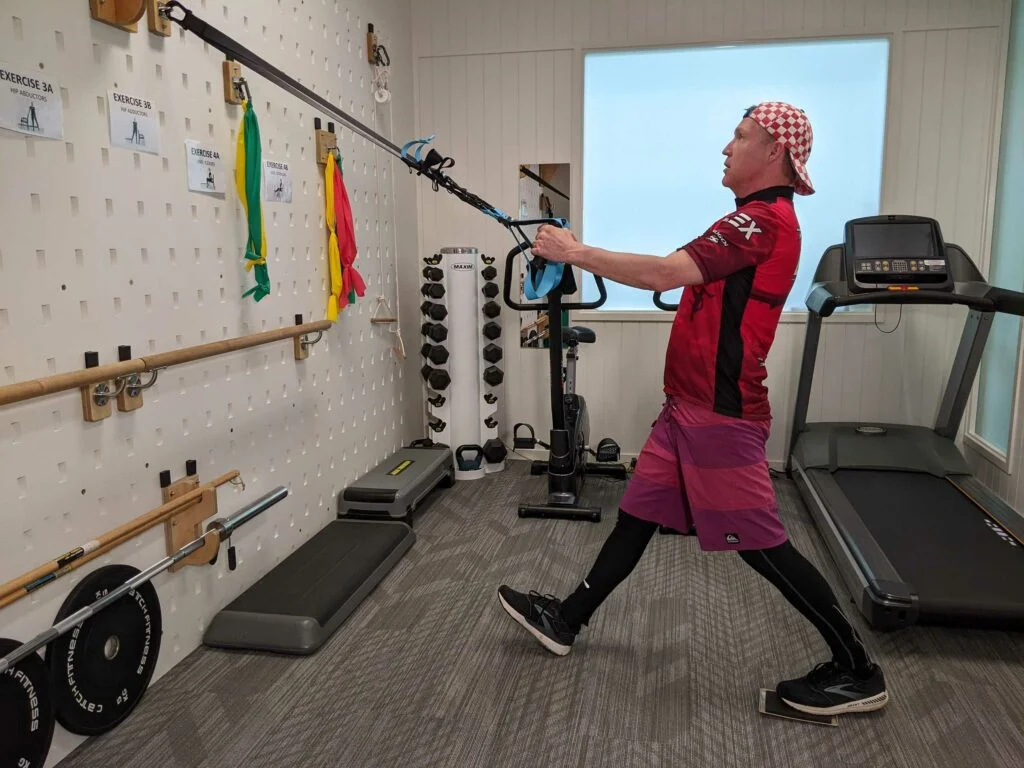
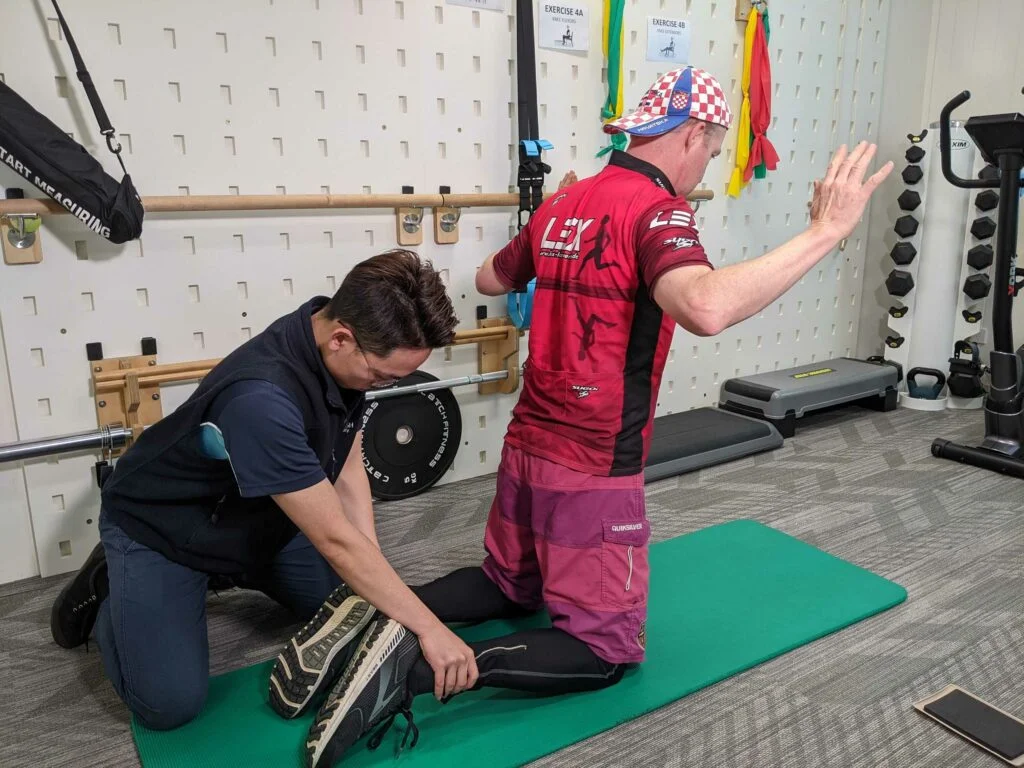
“Do not rush rehabilitation"
Hamstring tears have a high relapse rate of 12%-33% (4). This could mean that the 2–3-week hamstring injury becomes 4-6 weeks of recovery in total. So be patient, and don’t try to rush back into sports or running too soon.
When managing the hamstring, you need to approach it as if it’s your recipe. You need to make sure you include all the ingredients and follow the instructions. The recipe for hamstring management includes multiple ingredients, and if you include one without the other, the recovery will take longer and is less likely to be successful. Your injury is unique to you. If you are just focused on one aspect of rehabilitation, for example static stretching for the hamstring, you are simply just lengthening the muscles without regaining the strength you lost.
On average, science shows that people with minor or moderate hamstring injuries lose around 27% of their strength 5 days post tear (5). In order to ensure the fastest and most effective recovery, you will need to incorporate a balance of strength training and stretching for an effective rehab program.
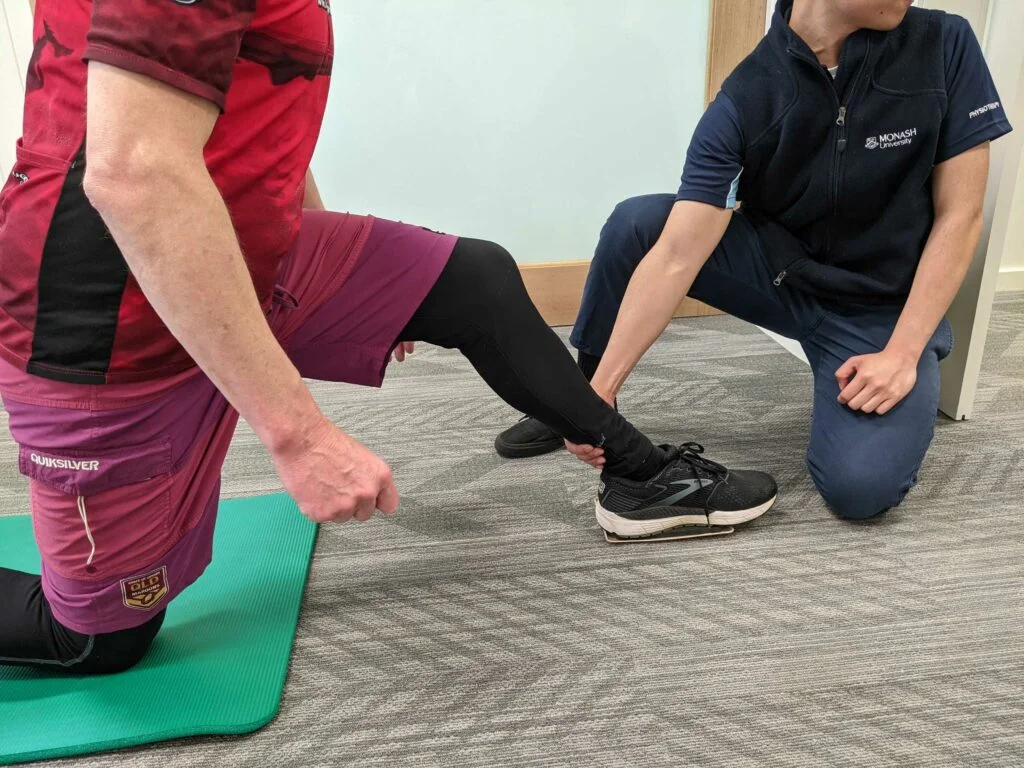
FAQ’s
How long will I be side-lined?
In really broad terms, professionals are out for three matches, sixteen days and ten training sessions. So, if you have other commitments in life, this will be longer.
So, what’s my rehab?
Your rehabilitation we prescribe to you are based on flexibility, agility, balance, power and speed. According to your stage of injury, type of muscle injury your rehabilitation will centre on these and some components may be a bigger proportion than others as you rehab through.
Take a look at some exercise examples on our video, note the combinations of on flexibility, agility, balance, power eccentric control and speed used.
What are the risks of hamstring injury?
We see mostly sprinting and high-speed running injuries on the couch. They are almost always non-contact and those from kicking, sliding, stretching and overuse are significantly less.
How do I reduce the risk of injury?
In prevention, we recommend our recovering clients to focus on strength and stretching as mentioned above but also agility, games skills from a basic level. Getting your power and control at the basic skills means you can transfer this to more complicated challenging skills as you move through your recovery back to game day.
The risk of injury can also be reduced by dealing with structural issues, higher up such as a stiff or lordotic spine. This means trunk control, lumbopelvic stability, neuromuscular function. Many studies show that this approach influences function and control of the lower extremity (6,7).
So…. Remember!
To summarise, do be patient, do build strength while making sure you do not rush back and do not just stretch. Hamstrings are frustrating enough as is for people, the last thing you need is for them to keep happening again and again through making the same mistakes. Do the rehab under professional guidance. We are here to help you move forwards towards the best recovery possible.
Run on and kick on!
References
- BJSM (2016), 50(12).
- AFL releases 2021 Injury Report. (2022)
- BJSM (2012), 47(6).
- Revista Brasileira De Ortopedia (English Edition) (2017), 52(4).
- JOSPT (2016), 46(8).
- Ekstrand, J., 2017. Encyclopedia of football medicine. Stuttgart: Thieme.
- JOSPT 2004; 34(3):116–125











